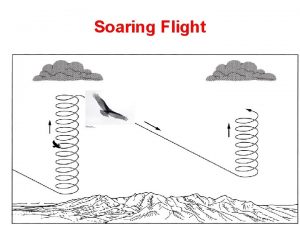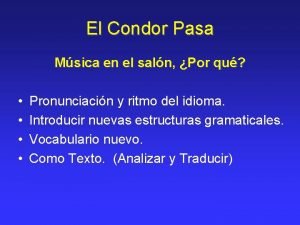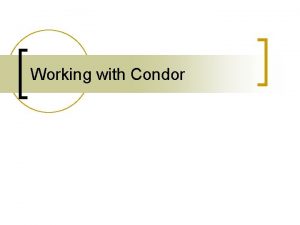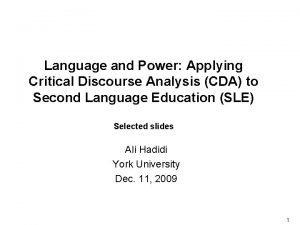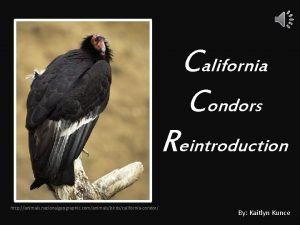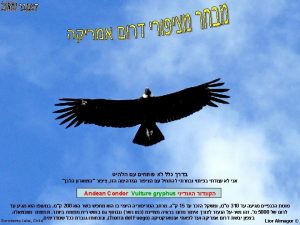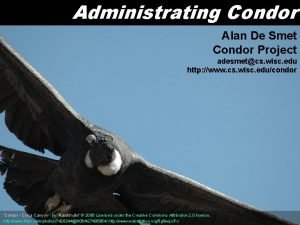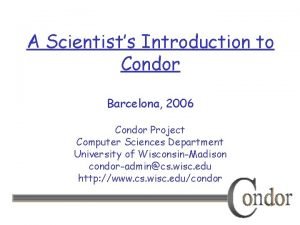Soaring Flight Soaring Flight Andean Condor soaring http
















- Slides: 16

Soaring Flight

Soaring Flight

Andean Condor soaring http: //www. youtube. com/watch? v=4 j 6 q. DJWiwb. A

Flapping Flight downstroke: the wing beats down and forwards, producing lift and propulsion. upstroke: the wing flexes in towards the body (largely due to a rotation of the humerus about its long axis) and then rises and extends ready for the next downstroke. Passive aerodynamic lift provides the restoring force for the upstroke under most cruising conditions, although during takeoff the upstroke is powered.

Wing Stroke

Take-off, short flight and landing

There are two main flight muscles attaching to each wing. The pectoralis muscle powers the downstroke and is proportionately very large in birds (up to 35% of body weight). The supracoideus is much smaller and has a tendon which curves around to attach to the top of the humerus.

Diagram showing the large fan-shaped pectoralis muscle converging to an attachment on the humerus, and the smaller supracoideus deep to it at the front, attaching to the top of the humerus via a tendon passing through the foramen triosseum.

The supracoideus can provide power to the upstroke if required but more usually produces a rapid rotation of the humerus at the top of the upstroke. In addition there are 48 other muscles within the wing and around the shoulder which produce the wide range of movements of the wing and its feathers.

Long, narrow wings: high speed gliding in high wind - Albatross Slim, unslotted wings permit fast, efficient flight in open habitat Falcon Short, rounded wings: fast takeoffs and rapid maneuvers - Grouse Slots in wings of intermediate dimensions increase lift and gliding ability – Buteo hawks

Assuming birds of same weight: Wing Loading: weight / wing area Aspect Ratio: wing length / wing breadth

Hummingbird Flight

Hummingbird Videos http: //www 7. nationalgeographic. com/ngm/0701/feature 4/multimedia. html Especially Note Purple-crowned Woodnymph and Marvelous Spatuletail

Kestrel Flight – hovering http: //www. youtube. com/watch? v=31 Xw 75 h. Aw. Ic

Wing beats vary by type of bird as well as the speed and weight. Robert Burton in the book Bird Flight estimates this range: Gray heron 2 wing beats per second Herring gull 2. 8 wing beats per second Starling 5. 1 wing beats per second Pheasant 9 wing beats per second Mockingbird 14 wing beats per second Tits 25 - 27 wing beats per second Ruby-throated hummingbird 80 wing beats per second

Carolina Wren
 Andean condor speed
Andean condor speed Andean medjedovic
Andean medjedovic Reverse fault
Reverse fault Iraad definition project management
Iraad definition project management Whats condor
Whats condor Apis daten condor
Apis daten condor Condor atm
Condor atm El condor pasa (horse)
El condor pasa (horse) Condor v barron knights
Condor v barron knights The condor experience
The condor experience Condor homepage
Condor homepage Condor job flavour
Condor job flavour Critical thinking cda
Critical thinking cda Condor de1668
Condor de1668 Condor distributed computing
Condor distributed computing Snyder introduction to the california condor download
Snyder introduction to the california condor download Condor aero club
Condor aero club
